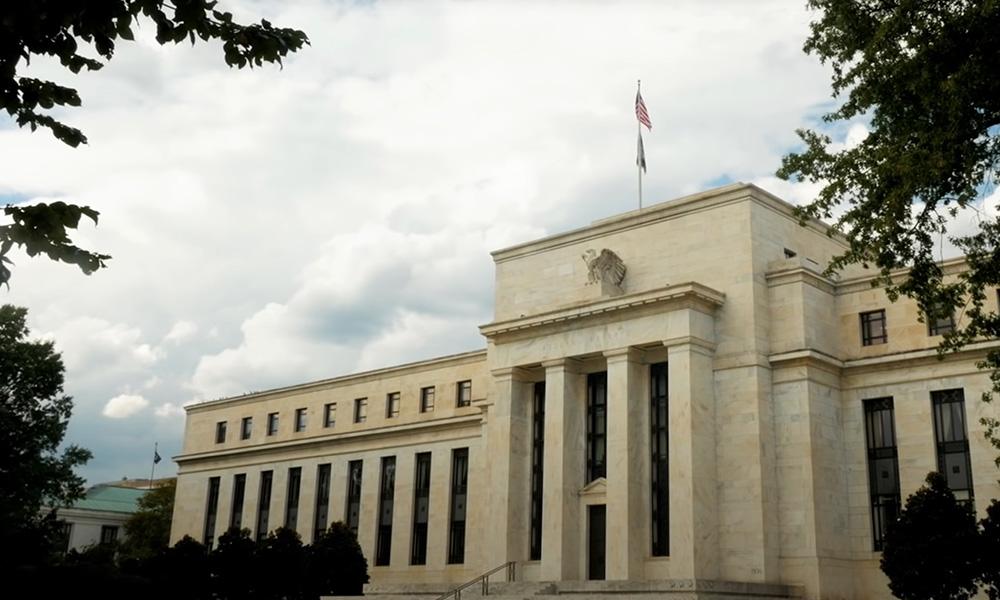A further 25 basis point rate cut in December is unlikely! Federal Reserve hawks have spoken out en masse, with several key figures criticizing the rate cut as premature.
2025-11-03 09:24:13

Logan makes the definitive statement: the labor market does not need interest rate cuts to "rescue" it.
Dallas Fed President Logan stated bluntly at a banking conference last Friday: "I don't think there's any need for a rate cut this week." She went further, saying that unless there is "clear evidence" that inflation will fall faster than expected, or the labor market cools significantly, a rate cut in December is "very unlikely." Logan's logic is simple and straightforward: while the risks to the labor market are currently tilted to the downside, they can be "closely monitored and addressed only when necessary," without the need for a hasty preventative rate cut now. In other words, the "minor cold" in the labor market doesn't warrant a major rate cut.
Hamak added insult to injury: Current interest rates are "virtually unrestrictive," and inflation must continue to be suppressed.
Cleveland Fed President Hamack's remarks were even more incisive. She stated bluntly last Friday, "I would prefer to keep rates unchanged this week." In her view, the Fed just cut rates by 25 basis points, and the current policy rate is close to her "neutral level"—"virtually unrestricted, if not completely unrestricted." Hamack emphasized that for inflation to truly return to the 2% target, "a certain degree of restraint" must be maintained. The implication is that cutting rates now is tantamount to "loosening the reins" on inflation, with potentially disastrous consequences. It's worth noting that both Hamack and Logan will be voting members on the FOMC next year, at which point their hawkish stances will directly translate into significant voting weight.
Bostic "reluctantly nodded": He supports interest rate cuts, but each cut hurts his heart.
Atlanta Fed President Bostic's remarks resembled a monologue filled with inner monologues. He admitted last Friday, "I ultimately supported this week's rate cut... but it makes me uneasy." Why uneasy? Because each rate cut brings policy closer to a neutral level, and Bostic's biggest fear is that the market will mistakenly believe "inflation is no longer a problem." He only favored one rate cut throughout the year (the one in September), and now being forced to "cut one more," is clearly a result of compromise.
Even more intriguing is Bostic's public endorsement of Powell's "no cut in December" policy, calling it a "rare but necessary" market guidance that accurately reflects the internal divisions within the committee.
Schmid voted against the cut: the economy still has momentum, and a 25 basis point reduction is "a drop in the bucket."
Kansas City Fed President Schmid was one of the two dissenting votes at last week's FOMC meeting. In a written statement last week, he said the U.S. economy remains resilient, the labor market is largely balanced, and any weakness stems more from technological and demographic changes than from a collapse in demand. Therefore, a 25-basis-point cut would have "little effect" on easing employment pressures.
Even more sternly, he warned that if the market begins to doubt the Fed's 2% inflation commitment, rate cuts could actually cause inflation expectations to "remain detached for a longer period." In short, rate cuts are not a panacea and could even backfire.
The two dissenting votes were actually completely contradictory.
Interestingly, another dissenting vote last week came from Federal Reserve Governor Milan, but he advocated for a "more aggressive 50 basis point cut." Hawks want a slow cut, doves want a fast cut, and Powell is caught in the middle, making it no wonder he unusually declared in advance that "a cut in December is not certain."
Inflation remains the number one enemy, but employment risks are manageable.
All four hawks unanimously mentioned inflation: the current CPI remains high, and the pace of returning to the 2% target is "maddeningly slow." In contrast, while there have been reports of large-scale layoffs in the labor market, systemic risks have not yet materialized. Logan and Hamack both stated they would closely monitor layoff trends, but "precautionary rate cuts" are premature. Bostic, however, hopes that regional Fed banks will "fill the data gaps" through corporate surveys, using firsthand information to bridge internal divisions.
Following Powell's remarks, Federal Reserve interest rate futures quickly adjusted: the probability of a December rate cut fell from nearly 100% to about 66%, while the probability of no rate cut surged to 33%.
In Powell's final six months, reaching a consensus was harder than cutting interest rates.
As Powell's term draws to a close, the internal divisions between hawks and doves within the Federal Reserve are becoming increasingly public. At the December 9-10 meeting, the threshold for a rate cut has been collectively raised by hawks; without a hard landing in inflation or employment data, Powell will likely have to overcome the hurdle of the "Big Four" hawks if he wants to push rates down by another 25 basis points. With inflation still high and rate cuts still ongoing, the Fed's "tight balance" drama has only just begun!
- Risk Warning and Disclaimer
- The market involves risk, and trading may not be suitable for all investors. This article is for reference only and does not constitute personal investment advice, nor does it take into account certain users’ specific investment objectives, financial situation, or other needs. Any investment decisions made based on this information are at your own risk.





















